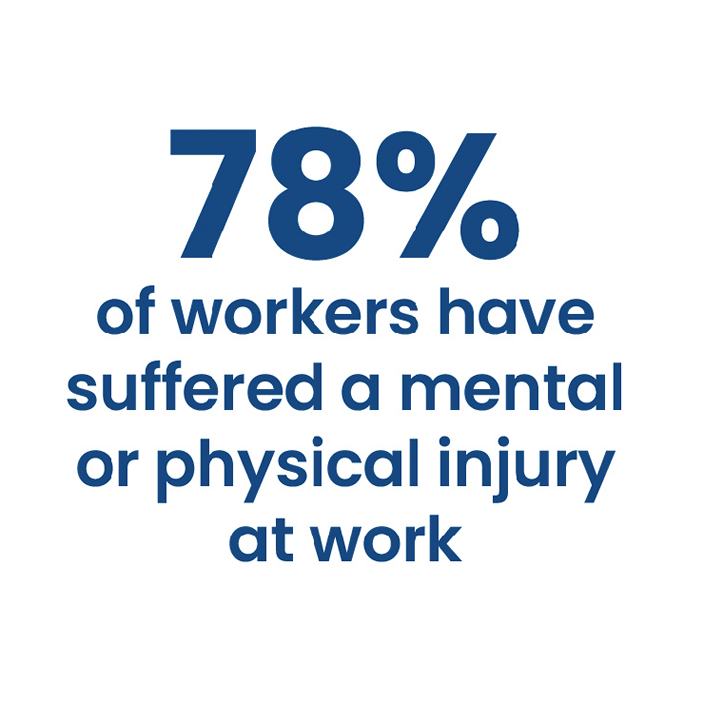
Work shouldn’t hurt; teaching shouldn’t hurt. But it does. Each year, our Union supports members who have been injured or become ill because of their work, Jessica Willis writes.
As reported in the last edition of IE, findings from teacher targeted bullying and harassment and psychological wellbeing research have put a spotlight on the lived reality of Australian teachers, and now the Australian Council of Trade Unions (ACTU) has added to the furore with the release of findings on the state of workplace health and safety across Australia.
The Work Shouldn’t Hurt survey has exposed an underbelly of unsafe work practices that have led to deaths and unacceptable numbers of people being exposed to trauma, experiencing violence, or sustaining psychological or physical injuries and illnesses.
A career without workplace injuries is the exception not the norm, according to the Work Shouldn’t Hurt report, which surveyed over 25,000 participants from the Australian workforce.
The report found Australian workers are dealing with systemic physical and mental health issues as a result of the conditions of their work, with most workers aware of serious threats to their physical and mental health which are being actively ignored by their employers.
No worker immune
The report found Australians are more than twice as likely to suffer an injury at work than to have a secure job and nearly 80% have suffered a psychological or physical injury while at work.
Sixteen per cent said they knew someone who was killed at work or died from a work-related disease and another 55% said they were aware of existing conditions in their workplace that could cause serious injury or illness if not addressed.
Issues such as workplace abuse, over work, threats of violence and actual violence, bullying and harassment mean that stress, depression and anxiety are rampant.
It also found there is a widespread belief that employers do not know how to respond or are not willing to take action on serious threats to their employees’ safety.
Danielle Wilson, IEUA-QNT Industrial Officer said the education sector is no exception to these findings.
“People working in the education sector face a range of risks that need to be managed, including student violence, hazardous substance exposure, chronic vocal injury, repetitive strain injury, injury from participation in physical activities, and slips, trips or falls common to most workplaces,” Wilson said.
“By far, the majority of the WorkCover claims our Union assists members with are psychological injuries.
“Teachers are second only to emergency services and military in the incidence of work-related psychological injury.
“These are caused by a range of hazards including work intensification, exposure to trauma or violence in schools, workplace bullying and harassment and poor management practice such as micromanagement.”
Psychological illness and injury
Work Shouldn’t Hurt highlighted a disturbing growth in the rate of psychological illnesses or injuries such as stress, depression or anxiety at work.
It found psychological work hazards are under regulated and consequently under recognised but are just as dangerous as physical ones.
More than 60% of respondents experienced poor mental health because of unaddressed psychological hazards in their workplace.
These can include debilitating issues like stress, anxiety or self-harm.
According to the survey findings, of the total respondents:
• in the last 12 months 47% of respondents were exposed to traumatic events, distressing situations or distressed or aggressive clients/customers
• 66% of respondents experienced high workloads
• 31% experienced occupational violence (abuse threats or assault at work by clients, customers, the public or co-workers), and
• 61% have experienced poor mental health because their employer or workplace had failed to manage or address these poor work conditions.








































































































































